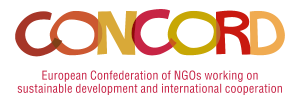AidWatch 2017: Genuine aid – EU pushes commitment up to 2052

The EU could take a generation to meet the 0.7% ODA/GNI target at the current rate of growth, reveals our new AidWatch report. While 2016 saw a substantial increase of 27% in development spending, there has also been a relatively dramatic increase in reporting of inflated aid, such as in-donor costs or debt relief.
Over the last 5 years, Official Development Assistance from EU has increased by 27%. What’s more, 5 EU Member States now compose the 0.7% Club – those that reach the target: Denmark, Luxembourg, Sweden, the UK and for the first time, Germany.
Yet the nature of the spendings tell another story. In 2016, the spending costs for migrants, refugees and securitisation, all reported as aid, increased by 43 % compared to 2015. But this type of spending, also known as inflated aid, either never leaves the EU and is spent in-house or illustrates the conditions imposed by the EU on third countries. At the same time, the amount of aid that reaches Least Developed Countries continues to decrease (in 2015, it represented just 14.6% of total European aid). The real aid gap between today’s spendings and the 0.7% target actually amounts to EUR 29.25 billions.
With only genuine aid being accounted, CONCORD calculates that it would take the EU and its Member States another 30 years to reach their commitment to 0.7% GNI. We should expect the target to be reached in 2052. The target having been adopted in a 1970 UN Resolution, this means the EU will live up to its commitments 82 years after the target was first set.
